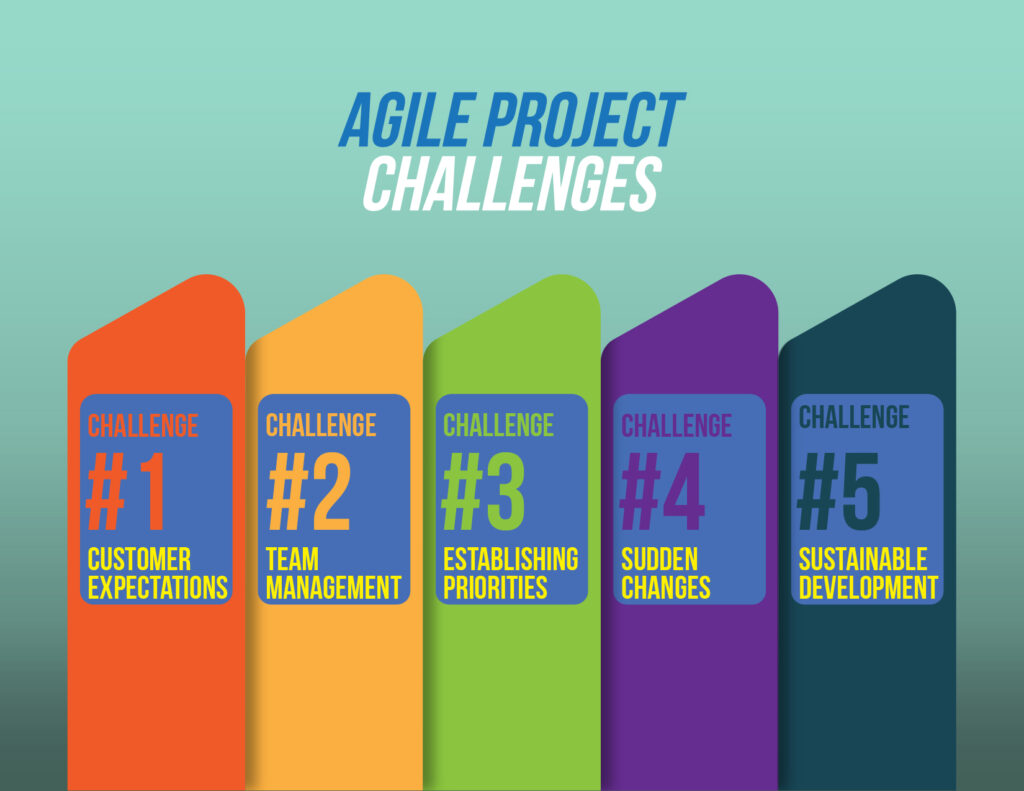We have previously discussed Agile; the project management methodology relies on teamwork and flexibility to develop software solutions adapted to both the project’s needs and the client.
Among its advantages is that it allows having greater control over the project’s monitoring, making it much easier to introduce changes and adjustments when it needs them and increase the customer’s satisfaction through its involvement from the beginning.
But agile project management has significant challenges ahead.
Challenge 1: Customer expectations
The first step is to establish and analyze the client’s needs and the approach given to the project according to the company’s experiences and offer them the best product or service that meets their needs and expectations. Agile is a hands-on methodology that relies upon constant communication between the team leaders and the end customer, so it is crucial always to listen.
Challenge 2:Team management
Establishing the work process as if the team were a single unit is a challenge for agile project leaders due to the variety of profiles in the joint team. A unified team facilitates reaching the objectives in the established times to reach the goals set in the project. It also enables sorting out outside factors like the change in the work environment forced by the COVID-19 pandemic.
Teams that regularly collaborate on improving the way they work can overcome the challenges of working within the confines of a process because they decide how (and if) that process is working for their business needs.
Challenge 3:Establishing priorities
In agile software development projects, the budget is determined based on the product backlog, feature prioritization, changed business rules, and iteration planning. However, feature prioritization is an essential parameter among these, which are developed based on their priorities.
It is common to follow an agile methodology in a project with multiple scrum teams working in parallel. In this context, a team priority may not have the same weight as others. However, the aggregated solutions from the teams are considered the final solution. But making this perception clear sometimes becomes a challenge, which can lead to a struggle during implementation.
Challenge 4:Sudden changes
Teams need to know how to absorb and respond in an agile way to all the requests for change that the client may make as the project evolves. One of the premises of agile project management is that it has to adapt as the project evolves. To be able to adapt quickly to the changes that the client may request at any time. If communication is fluid, the client feels heard and becomes part of the project’s development. As a general rule, an involved customer is a customer satisfied with the result.
Challenge 5:Sustainable development
Ensure that the process and speed of project development are sustainable, taking into account the team’s workload. If you know how to manage the project’s development, the team will deliver it within the agreed deadline, thus meeting the client’s expectations at the beginning.
A good agile project management team must carry out its tasks with a high level of involvement and collaboration, making it possible to achieve maximum productivity with minimal coordination, to bring the project to fruition. To minimize this dependency on the team, its members have different skills and are experts in their areas. However, they must also have basic knowledge and skills related to the rest of the people who make up the workgroup.
Building a strong culture with the team is crucial to ensure that the processes run smoothly. Team members who have worked with agile methodology are essential to providing insight within the organization and the company leaders’ vision to carry out a successful agile development process.


